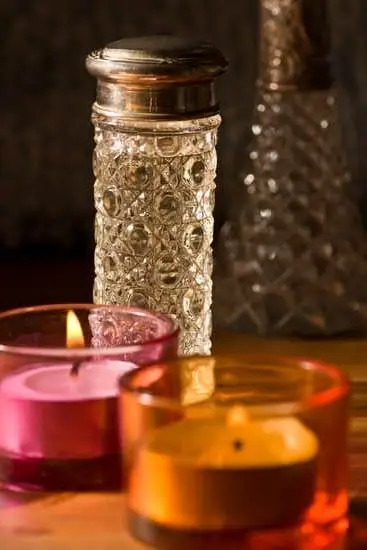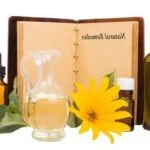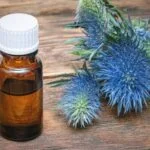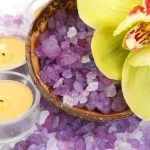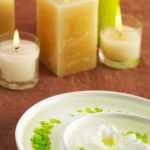Aromatherapy treatment is a holistic therapeutic practice that utilizes essential oils to promote physical, emotional, and mental well-being. In this introductory section, we will delve into the concept of aromatherapy, its origins, and the reasons behind its widespread popularity. Aromatherapy has been used for centuries in different cultures around the world, and it continues to gain recognition for its numerous benefits in modern times.
Aromatherapy traces its roots back to ancient civilizations such as Egypt, China, and India. These cultures recognized the powerful healing properties of plants and incorporated them into their daily lives through various forms of aromatic treatments. Over time, aromatherapy techniques and practices have evolved to incorporate a wide array of essential oils derived from plants. Today, it has become a mainstream complementary therapy known for its soothing effects on both the body and mind.
The practice of aromatherapy is widely embraced due to its many advantages. Not only does it offer an alternative form of relaxation and stress relief, but it also provides support for specific health conditions such as anxiety, insomnia, headaches, and digestive issues.
Additionally, aromatherapy can enhance mood and emotional well-being by promoting feelings of calmness or rejuvenation. As we delve deeper into this article’s sections, we will explore how aromatherapy has evolved over time and understand why it remains a popular choice for those seeking natural approaches to wellness.
History and Evolution of Aromatherapy
Aromatherapy has a rich history that spans across different cultures and time periods. The practice of using aromatic plants for healing and well-being can be traced back thousands of years. In this section, we will explore the ancient roots of aromatherapy and how it has evolved over time.
Ancient civilizations such as Egypt, China, and India were among the first to recognize the therapeutic properties of essential oils. In ancient Egypt, aromatic plants were used in religious rituals, cosmetic preparations, and embalming processes. The Egyptians also believed that essential oils had spiritual qualities and could connect them with their gods.
In China, aromatics were an essential part of traditional medicine practices. The Chinese used plant extracts to treat various ailments and believed that they could restore balance to the body’s energy systems. Similarly, Ayurvedic medicine in India relied heavily on aromatic substances for their therapeutic benefits.
As time went on, the knowledge and use of aromatics spread throughout different civilizations. In the Middle Ages, essential oils were used in Europe to combat the bubonic plague. During the Renaissance period, botanical studies led to advancements in distillation techniques, allowing for more efficient extraction of essential oils.
The modern practice of aromatherapy as we know it today began to take shape in the early 20th century. French chemist Rene-Maurice Gattefosse coined the term “aromatherapy” after accidentally discovering the healing properties of lavender oil when he burned his hand and found relief by immersing it in lavender oil.
Since then, aromatherapy has continued to evolve and gain popularity worldwide. It is now recognized as a complementary therapy that can enhance well-being on physical, emotional, and psychological levels. With a deep-rooted history spanning across cultures and ages, aromatherapy continues to thrive as a holistic approach to health and healing.
Essential Oils and their Role in Aromatherapy
Aromatherapy treatment relies heavily on the use of essential oils. These oils are concentrated extracts that are derived from various parts of plants such as leaves, flowers, stems, and roots. Essential oils are obtained through methods like distillation, expression, or solvent extraction. Each essential oil has its own unique composition and therapeutic properties.
What are Essential Oils?
Essential oils are highly concentrated liquids that contain volatile aroma compounds from plants. These compounds give each essential oil its distinctive fragrance and therapeutic effects. Due to their potency, essential oils should never be used undiluted on the skin or ingested without proper guidance.
Extraction Methods
There are several methods used to extract essential oils from plants. Distillation is the most common method, where steam is passed through plant material to separate the oil from the plant matter. Expression, also known as cold-pressing, involves mechanically pressing the plant material to release the oil. Solvent extraction uses a solvent like ethanol to dissolve the oil from the plant material.
Diverse Range of Essential Oils
Aromatherapy utilizes a wide array of essential oils, each with its own therapeutic benefits and applications. Lavender essential oil, for example, is well-known for promoting relaxation and reducing stress. Peppermint essential oil is often used for digestive issues and headaches due to its cooling effect. Tea tree essential oil has antimicrobial properties and is commonly used in skincare products. Other popular essential oils used in aromatherapy include eucalyptus, lemon, chamomile, bergamot, and rosemary.
The unique properties of each essential oil make them suitable for different conditions and purposes within aromatherapy treatment. It is important to consult a qualified aromatherapist or reference reputable sources when selecting and using essential oils to ensure their safe and effective use in aromatherapy.
Understanding the Science behind Aromatherapy
Aromatherapy is more than just a pleasant scent or a soothing massage. It is backed by science and has been shown to have physiological and psychological effects on the body and mind. The use of essential oils in aromatherapy treatment can directly influence our brain activity, hormone levels, and immune system response.
One of the main ways aromatherapy works is through inhalation. When we inhale essential oils, their molecules stimulate the olfactory system in our noses, which sends signals to the limbic system in our brains. The limbic system plays a key role in regulating emotions, memory, and certain bodily functions. As a result, different scents can elicit various emotional and physical responses.
Research has also shown that certain essential oils have antimicrobial properties, meaning they can kill or inhibit the growth of microorganisms such as bacteria, viruses, and fungi. For example, tea tree oil has been found to be effective against MRSA (methicillin-resistant Staphylococcus aureus), a type of antibiotic-resistant bacteria.
In addition to inhalation, aromatherapy can be applied topically through massage or added to baths. When essential oils are absorbed through the skin, they can enter the bloodstream and reach different organs and tissues in the body. This method allows for localized effects as well as systemic benefits.
Overall, understanding the science behind aromatherapy helps us grasp how it can positively impact our health and well-being. By targeting both our physical and emotional systems, aromatherapy offers a holistic approach to healing and relaxation.
| Physiological Effects | Psychological Effects |
|---|---|
| – Stimulates brain activity | – Regulates emotions |
| – Modulates hormone levels | – Enhances memory |
| – Boosts immune system response | – Promotes relaxation and stress relief |
Techniques and Methods in Aromatherapy
Aromatherapy offers a variety of techniques and methods for experiencing its therapeutic benefits. Whether you prefer inhalation, massage, or baths, there are multiple ways to incorporate aromatherapy into your daily routine. Here are some popular techniques and methods used in aromatherapy:
- Inhalation: One common method is inhaling essential oils through direct or indirect inhalation. Direct inhalation involves sniffing the oil directly from the bottle or placing a few drops on a tissue or handkerchief and holding it close to your nose. Indirect inhalation includes using diffusers, vaporizers, or steam inhalation.
Diffusers and vaporizers disperse essential oils into the air, creating a pleasant aroma and allowing you to breathe in the therapeutic properties of the oils. Steam inhalation involves adding a few drops of essential oil to hot water and then inhaling the steam. - Massage: Aromatherapy massage combines the benefits of touch therapy with the healing properties of essential oils. During an aromatherapy massage, diluted essential oils are applied to the skin through gentle massage strokes. The oils penetrate the skin and are absorbed into the bloodstream, promoting relaxation, reducing muscle tension, and improving overall well-being.
- Baths: Aromatherapy baths provide an opportunity for complete relaxation while enjoying the aromatic benefits of essential oils. To create an aromatherapy bath, add a few drops (usually 5-10) of your chosen essential oil to a carrier oil such as jojoba or almond oil before adding it to warm bathwater. This allows you to experience both the physical effects of immersion in warm water as well as the psychological effects of inhaling the scent.
In addition to these techniques, there are other innovative ways to enjoy aromatherapy at home or on-the-go. Popular tools include personal diffuser pens that allow you to inhale essential oils discreetly throughout the day and wearable diffuser jewelry that holds a small amount of essential oil for continuous diffusion. These methods make aromatherapy accessible and convenient for individuals who may not have the time or means to perform more traditional techniques.
By experimenting with various techniques and methods, individuals can find the most suitable way to incorporate aromatherapy into their lives. Whether it’s through inhalation, massage, or baths, aromatherapy offers a versatile range of options for people seeking natural and holistic wellness solutions.
Common Conditions and Ailments Treated with Aromatherapy
Aromatherapy has been used for centuries to treat a wide range of common conditions and ailments. The use of essential oils in aromatherapy treatment can provide relief and support for individuals experiencing physical and mental health issues. Here are some of the most common conditions and ailments that can benefit from aromatherapy:
Stress and Anxiety
One of the most well-known uses of aromatherapy is its ability to help manage stress and anxiety. Essential oils such as lavender, chamomile, and bergamot have calming properties that can promote relaxation, reduce tension, and improve mood. Aromatherapy can be especially beneficial for those who struggle with chronic stress or anxiety disorders.
Insomnia
Many individuals suffer from insomnia or have difficulty falling asleep at night. Aromatherapy can offer a natural solution by promoting relaxation and creating a soothing environment conducive to sleep. Essential oils like lavender, vetiver, and clary sage have sedative properties that can help quiet the mind and induce restful sleep.
Pain Management
Aromatherapy has been found to be effective in managing different types of pain, including headaches, migraines, muscle aches, and menstrual cramps. Essential oils such as peppermint, eucalyptus, and rosemary have analgesic properties that can relieve pain when applied topically or inhaled.
Allergies and Respiratory Issues
Certain essential oils have antihistamine properties that can alleviate allergy symptoms such as nasal congestion, sneezing, and itching. Eucalyptus oil is particularly useful in treating respiratory issues like sinusitis, bronchitis, or allergies related to the respiratory system.
Mood Enhancement
Aromatherapy can also be used to uplift mood or boost energy levels. Citrus oils like lemon, orange, and grapefruit are known for their refreshing and invigorating properties. They can help improve focus, increase motivation, and enhance overall well-being.
While aromatherapy can provide relief for these conditions and ailments, it is important to note that it should not replace medical treatment or professional advice. Always consult with a healthcare provider before using aromatherapy as part of your treatment plan.
Safety Precautions and Guidelines for Aromatherapy Treatment
Aromatherapy treatment can offer numerous benefits for both the body and mind. However, it is essential to practice proper safety precautions when using essential oils to ensure a positive and safe experience. Here are some guidelines to follow:
- Essential Oil Dilution: Essential oils are highly concentrated substances and should never be applied directly to the skin without dilution. It is crucial to mix them with carrier oils such as jojoba oil, coconut oil, or sweet almond oil before applying topically. The general rule of thumb is to use a 2% dilution rate, which means adding around 12 drops of essential oil per ounce of carrier oil.
- Patch Test: Before using any new essential oil on your skin, it is advisable to perform a patch test. Apply a small amount of diluted essential oil on your inner forearm and wait for 24 hours to check for any adverse reactions like redness, irritation, or itching.
- Pregnancy and Nursing: Some essential oils may not be safe during pregnancy or while nursing. Certain oils can stimulate contractions or have hormonal effects that could be harmful during these periods. It is recommended to consult with a qualified aromatherapist or healthcare professional before using any essential oils during pregnancy or breastfeeding.
- Sensitization: Prolonged or excessive exposure to certain essential oils can lead to sensitization, where an individual develops an allergic reaction over time. To avoid this, it’s important to use essential oils in moderation and rotate their usage by switching them every few weeks.
- Photosensitivity: Some citrus-based essential oils like bergamot or grapefruit can make the skin more sensitive to sunlight and cause phototoxicity reactions like burning or pigmentation changes when exposed to UV rays. It is best to avoid direct sun exposure after applying these specific oils topically.
- Storage: Proper storage of essential oils is crucial for maintaining their potency and quality. Keep them in dark-colored glass bottles away from direct sunlight, moisture, and heat. Ensure the lids are tightly closed to prevent oxidization. Also, store them out of reach of children and pets.
By following these safety precautions and guidelines, individuals can enjoy the benefits of aromatherapy treatment while minimizing any potential risks or adverse reactions. Remember, it is always recommended to consult with a qualified aromatherapist or healthcare professional for personalized advice specific to your needs and health conditions.
DIY Aromatherapy at Home
One of the great benefits of aromatherapy is that it can be easily incorporated into your everyday life, right from the comfort of your own home. DIY aromatherapy allows individuals to personalize their experience and create blends tailored to their specific needs and preferences. Whether you’re looking to relax, energize, or alleviate certain ailments, there are various ways you can practice aromatherapy at home.
One simple and popular method is through inhalation. This can be done by adding a few drops of essential oils to a tissue or handkerchief and inhaling deeply. Alternatively, you could also invest in a diffuser or vaporizer, which disperses the fragrance of essential oils throughout the room. These devices come in various shapes and sizes and are readily available for purchase online or at wellness stores.
Another way to experience the benefits of aromatherapy at home is through massage. You can create your own massage oil blend by mixing essential oils with a carrier oil such as almond oil or jojoba oil. This not only allows you to benefit from the properties of the essential oils but also provides an opportunity for relaxation and self-care.
Lastly, taking a fragrant bath infused with essential oils is another popular method of enjoying DIY aromatherapy at home. Simply add a few drops of your chosen essential oils to warm bathwater and soak in the soothing scents while allowing your mind and body to unwind.
By incorporating DIY aromatherapy into your daily routine, you have control over the blends you use and how you choose to apply them. Keep in mind that each individual may respond differently to different scents, so it may take some experimentation before finding what works best for you. However, this ability to personalize your aromatherapy experience adds an extra layer of enjoyment and satisfaction when practicing it at home.
Conclusion and Final Thoughts on Aromatherapy Treatment
In conclusion, aromatherapy treatment is a holistic approach that has been practiced for centuries and continues to gain popularity today. Its roots can be traced back to ancient civilizations, where it was used for various purposes including healing, relaxation, and spiritual rituals. Over time, the practice of aromatherapy has evolved, with new techniques and methods being developed to harness the powerful benefits of essential oils.
The science behind aromatherapy is still being explored and understood, but numerous studies have shown its positive effects on both the body and mind. From reducing stress and anxiety to improving sleep quality and promoting overall well-being, aromatherapy offers a natural and non-invasive way to support health.
It is important to note that safety precautions must be taken when using essential oils, as they are potent substances that can cause adverse reactions if not used properly. Dilution guidelines should be followed, and individuals should be aware of any contraindications or potential risks associated with specific oils.
Frequently Asked Questions
What is the aromatherapy treatment?
Aromatherapy treatment is a holistic approach that utilizes essential oils to promote physical and psychological well-being. The therapy involves the use of various aromatic extracts from plants, such as lavender, peppermint, or eucalyptus, which are either inhaled or applied topically on the skin.
These essential oils are believed to have therapeutic properties that can address different health concerns like stress reduction, pain relief, improved sleep quality, and enhanced mood. Aromatherapy treatments typically involve the skilled blending of essential oils to create customized remedies based on individual needs.
What type of therapy is aromatherapy?
Aromatherapy is considered a form of alternative medicine that falls under the category of complementary therapies. It focuses on enhancing overall health by utilizing aromatic plant extracts known as essential oils.
Rather than solely addressing symptoms or specific illnesses, aromatherapy aims to restore balance within the body and mind through the stimulation of the olfactory system. By engaging the sense of smell, aromatherapy can have a profound impact on emotions and psychological well-being due to its intimate connection with memory and mood regulation.
How long does aromatherapy treatment last?
The duration of an aromatherapy treatment session can vary depending on various factors such as individual preferences, the purpose of treatment, and the specific techniques used. Generally speaking, an average aromatherapy session can last anywhere between 30 minutes to one hour. During this time, a trained therapist will work with clients to determine their needs and goals for treatment before creating a suitable blend of essential oils.
The actual hands-on treatment involves applying diluted essential oils to specific areas of the body or using them in techniques like massage or inhalation therapy. The number and frequency of sessions required may differ for each person and their particular health concerns or conditions being addressed through aromatherapy.

Are you looking for a natural way to improve your health and wellbeing?
If so, aromatherapy may be the answer for you.

